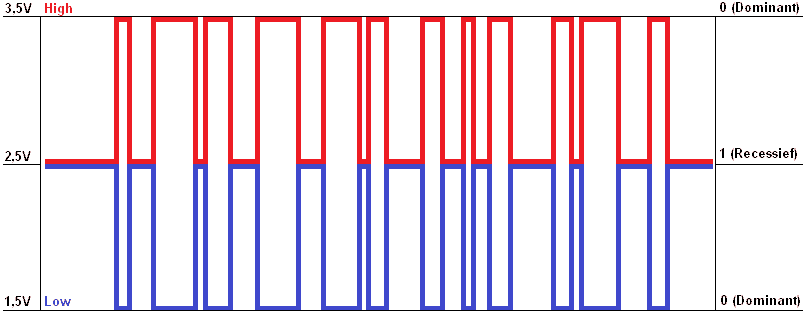

CAN BUS HIGH AND LOW ISO
In 1993, the Bosch specifications were published under the ISO 11898 series of standards.

Intel released the first CAN bus controller integrated circuit, the 82526, and Philips followed shortly thereafter. The CAN bus immediately differentiated itself from every other bus system available by being multi-master, implementing a broad range of error-detection and fault-mitigation mechanisms (including collision-resolution), and identifying data frames not by source and destination but by their content. Just imagine the nightmare if we had to run separate wires for every feature in a modern car. The first revision of the standard was officially released in February 1986 at the Society of Automotive Engineers in Detroit. None of them fit the requirements, so in 1983 the development of the CAN bus began.
CAN BUS HIGH AND LOW SERIAL
To cut down on the ever-growing mass of intertwined cables and reduce assembly cost and complexity, Bosch started to evaluate existing serial buses for use in cars.
CAN BUS HIGH AND LOW TV
Consumers demanded more and more features and increased automation to reach the pinnacles of luxury and modernity.ġ982’s popular TV series Knight Rider pushed everyone to imagine what an increasingly digitalized car would look like, a trend that never stopped and continues with Tesla today. In the early 1980s, automotive electrical systems were rapidly growing in size, complexity, and cost. Moreover, while we transition into an increasingly hyperconnected society, the CAN bus offers a refreshing alternative to the unpredictability and fast technological turnover of WiFi and mesh networks. The standard is widely adopted, affordable, absurdly reliable, extremely resistant to EMI ( electromagnetic interference), and devilishly clever in its design. RS485 and CAN bus are examples of popular buses that allow multiple devices to interact together CAN bus is the only multi-master bus with widespread adoption. There are many reasons why you should consider CAN bus for your next project. A passive three-headed Ethernet or USB cable where three devices communicate with each other cannot exist while respecting the relevant standard. Similarly, if you want to connect multiple USB devices to one port, you need a USB hub. For example, every computer connected through Ethernet is physically linked to only one other device, usually a switch. Many of the most common buses are point-to-point, meaning devices are connected in pairs. RS485 and CAN bus commonly operate from a few tens of meters up to a kilometre, and Ethernet can span over tens of kilometres in the form of fiber optical links. Over the past few decades, the industry has consolidated to a limited number of commonly adopted communication buses, from local communication standards such as SPI, I2C, and UART to RS232 and USB that can span a few meters. This article is part of a three-part introductory series on the controller area network bus (better known as CAN bus):


 0 kommentar(er)
0 kommentar(er)
